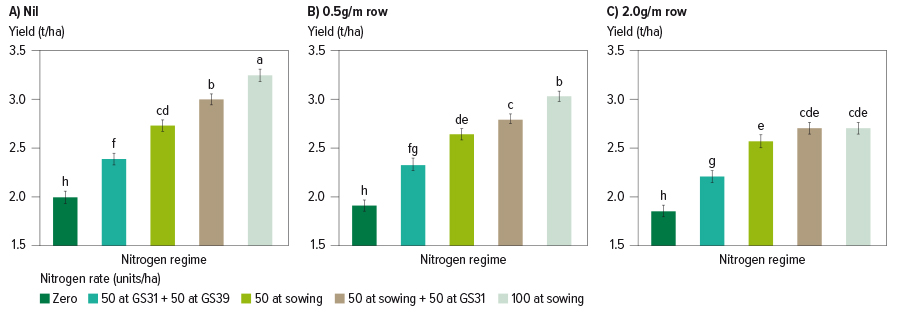Soil-borne diseases do not occur in isolation. Other diseases and abiotic constraints also play a role in crop outcomes.
Soil-borne diseases are a significant constraint to field crop production across the country, but diseases are not the only yield-limiting factor at play. We have a limited understanding of the interaction and compounding effects of abiotic constraints or multiple soil-borne diseases on cereal production.
To tackle this challenge, GRDC has invested in research to develop new information on the impacts of interactions between abiotic constraints and soil-borne disease, or two soil-borne diseases, on wheat and barley.
Led by Agriculture Victoria, project partners include the South Australian Research and Development Institute (SARDI), Western Australian Department of Primary Industries and Regional Development, the University of Southern Queensland and the NSW Department of Primary Industries with statistical support from the Statistics for the Australian Grains Industry program.
Potential interactions
The key constraints in each region were identified following a review of published data, GRDC reports and observations by grain growers, together with an analysis of the frequency of detection of multiple soil-borne pathogens from SARDI’s PREDICTA® B soil-borne disease testing service.
Seventeen field trials were established across Australia in 2019 and 2020 to look at the interactions between a disease and an abiotic constraint:
- nitrogen nutrition on crown rot in wheat or barley;
- nitrogen nutrition on root lesion nematodes (RLN) in wheat and barley;
- nitrogen nutrition on Rhizoctonia root rot in barley;
- potassium nutrition on Rhizoctonia root rot in barley;
- pre-sowing herbicide residues on crown rot or Rhizoctonia root rot in wheat;
- liming on Rhizoctonia root rot in barley; and
- soil moisture on Rhizoctonia root rot in barley.
A further 13 field trials investigated the interactions between two different soil-borne diseases:
- crown rot x RLN;
- crown rot x Rhizoctonia root rot;
- Rhizoctonia root rot x RLN;
- RLN x arbuscular mycorrhizal fungi (AMF); and
- crown rot x common root rot.
The interaction of two diseases has the potential to lead to:
- more yield loss than the individual pathogen due to synergism between the pathogens;
- less yield loss due to antagonism between the pathogens; or
- a neutral effect where yield loss is equal to the effect of each pathogen.
Early findings
Results so far show that high levels of crown rot reduce the economic benefit of increasing rates of nitrogen in wheat. For example, in a trial at Wongan Hills, Western Australia, yields increased in the absence of crown rot when nitrogen rates increased from 50 units per hectare to 100 units/ha, but there was no yield increase when crown rot levels were high – two grams per metre-row of crown rot inoculum (see Figure 1).
Figure 1: Effect of crown rot inoculum (nil, 0.5 or 2.0 grams per metre row) applied at sowing and different nitrogen regimes on grain yield of wheat in a trial at Wongan Hills, WA, during 2019.

Source: Dr Daniel Hüberli
The nitrogen thresholds varied depending on location and will need to be verified in future experiments.
Of some concern was the finding that nitrogen application led to higher end-of-season levels of the RLN Pratylenchus quasitereoides in the barley trial with RGT Planet and La Trobe at Frankland, WA. Applying 80 units of nitrogen/ha increased yields compared with no nitrogen, but there was no further yield benefit by increasing the rate of nitrogen to 120 units in the presence of P. quasitereoides.
Further research is required to determine the best nitrogen management strategies for crops grown in paddocks with a medium to high risk of soil-borne pathogens such as crown rot and RLN.
However, a conservative approach to nitrogen application at sowing may be prudent, particularly when seasons turn out to have a dry finish. Split applications of nitrogen may be a better approach, allowing growers to assess disease risk as the season progresses.
Analysis of field experiments evaluating pathogen combinations has yet to be completed.
More information: Dr Kirsty Owen, 07 4631 1239, kirsty.owen@usq.edu.au; Dr Daniel Hüberli, 08 9368 3836, daniel.huberli@dpird.wa.gov.au

























































